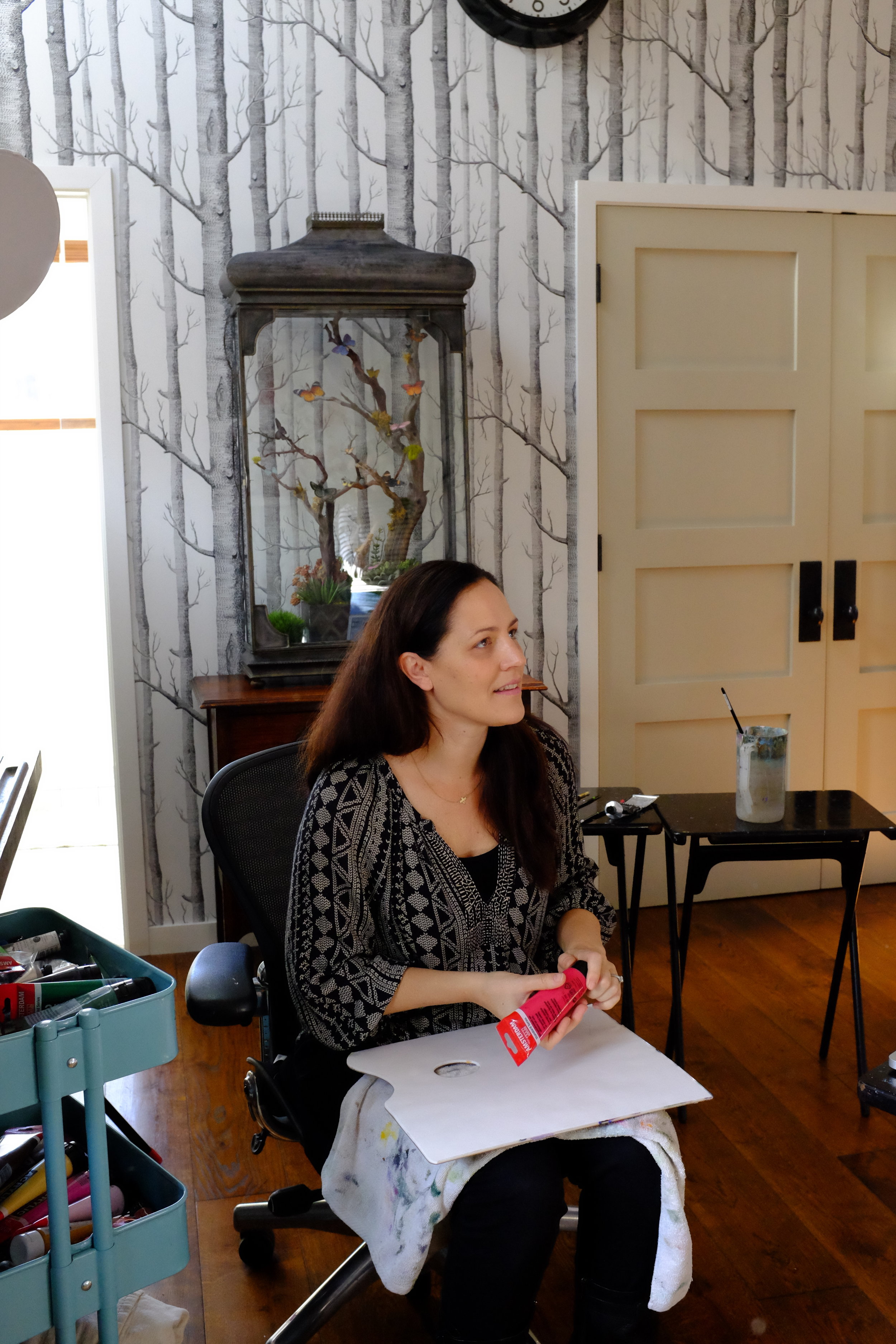
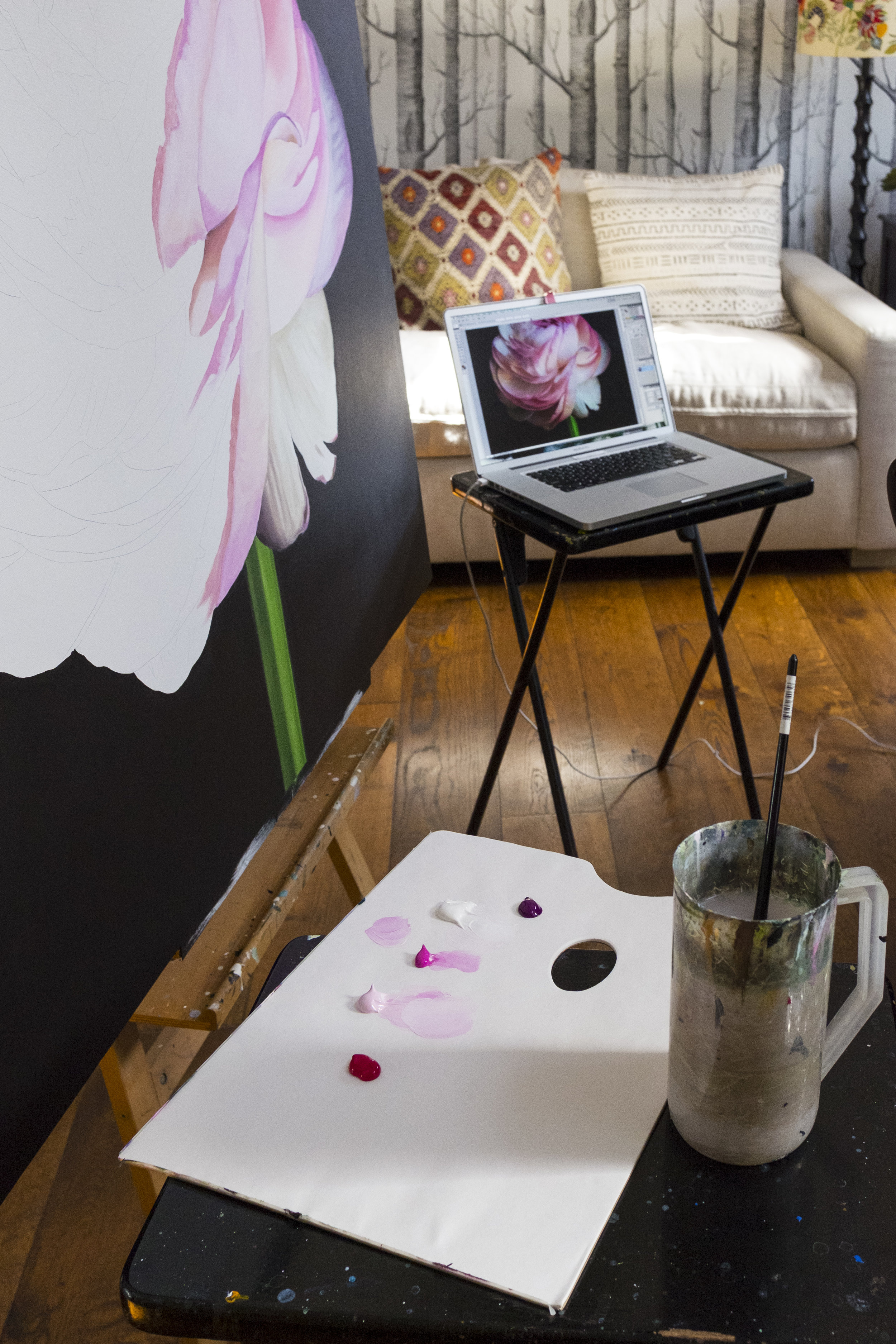
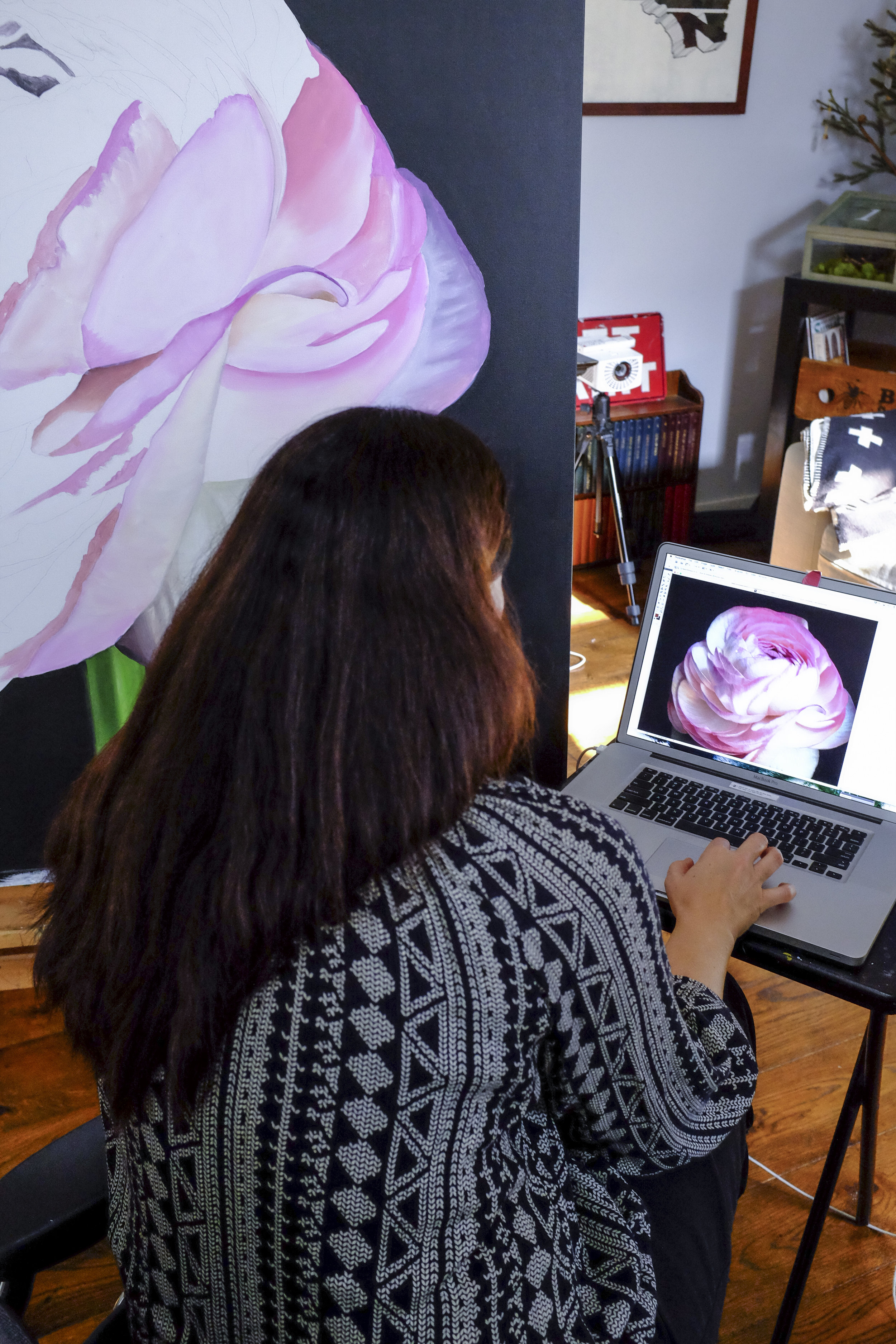
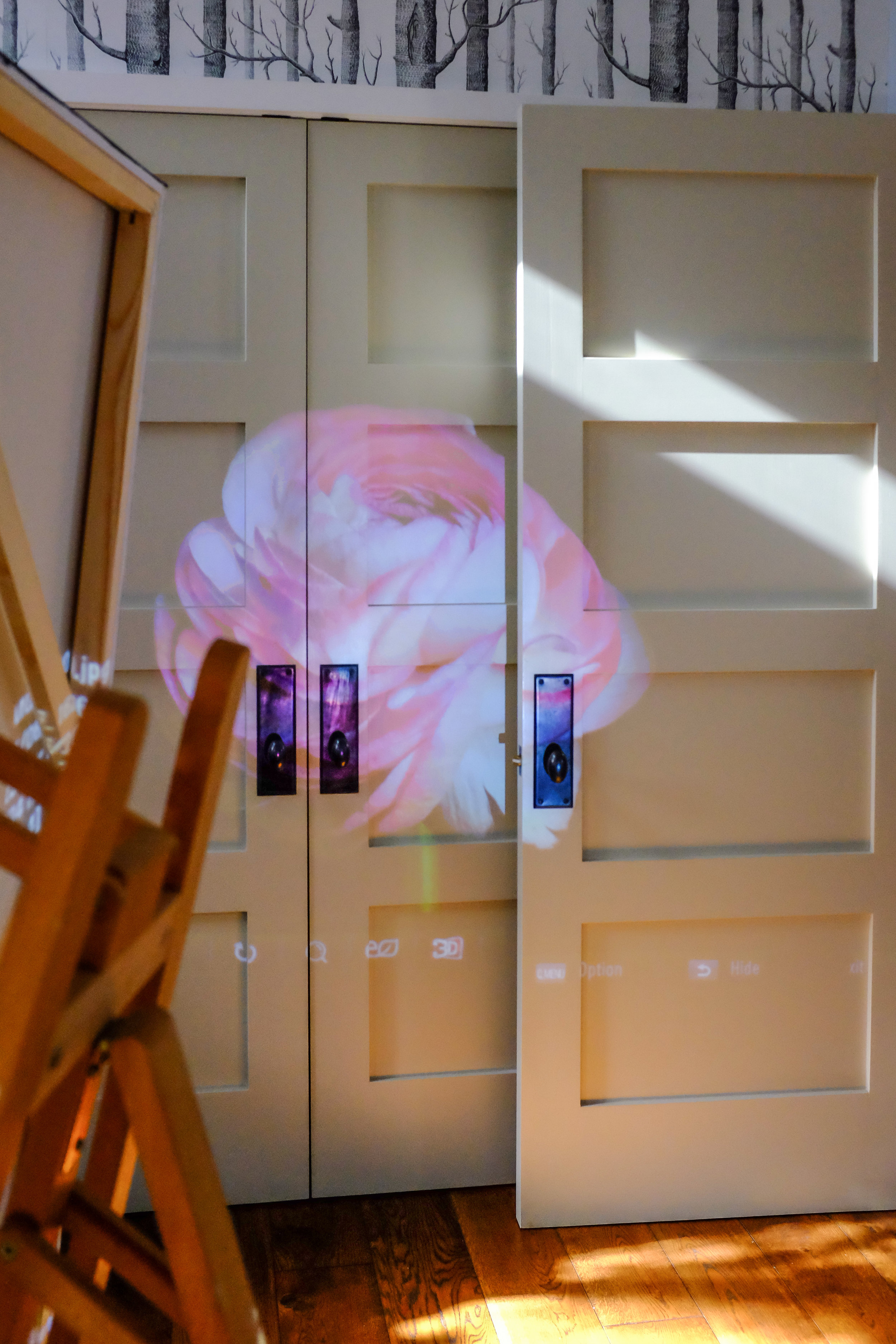
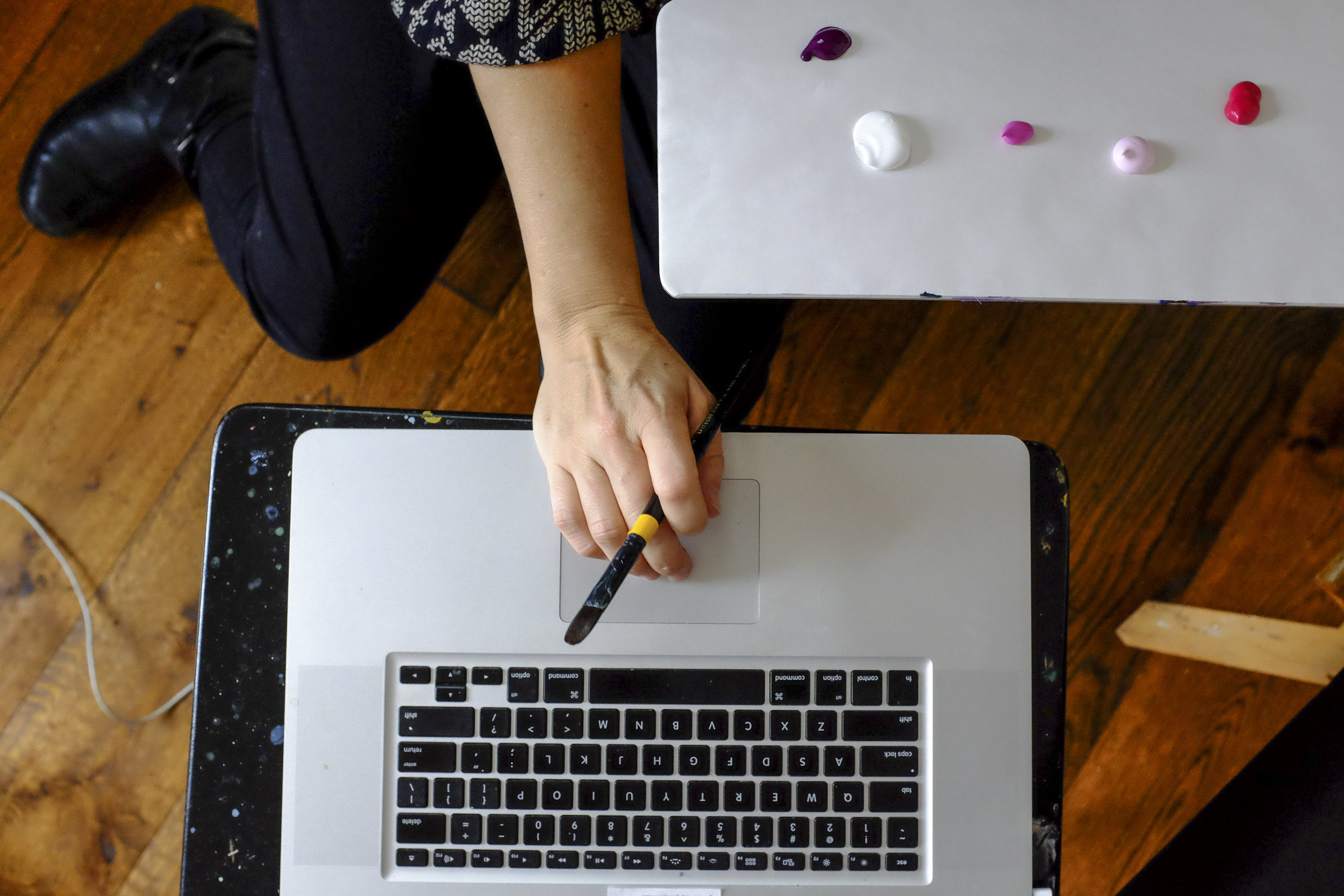
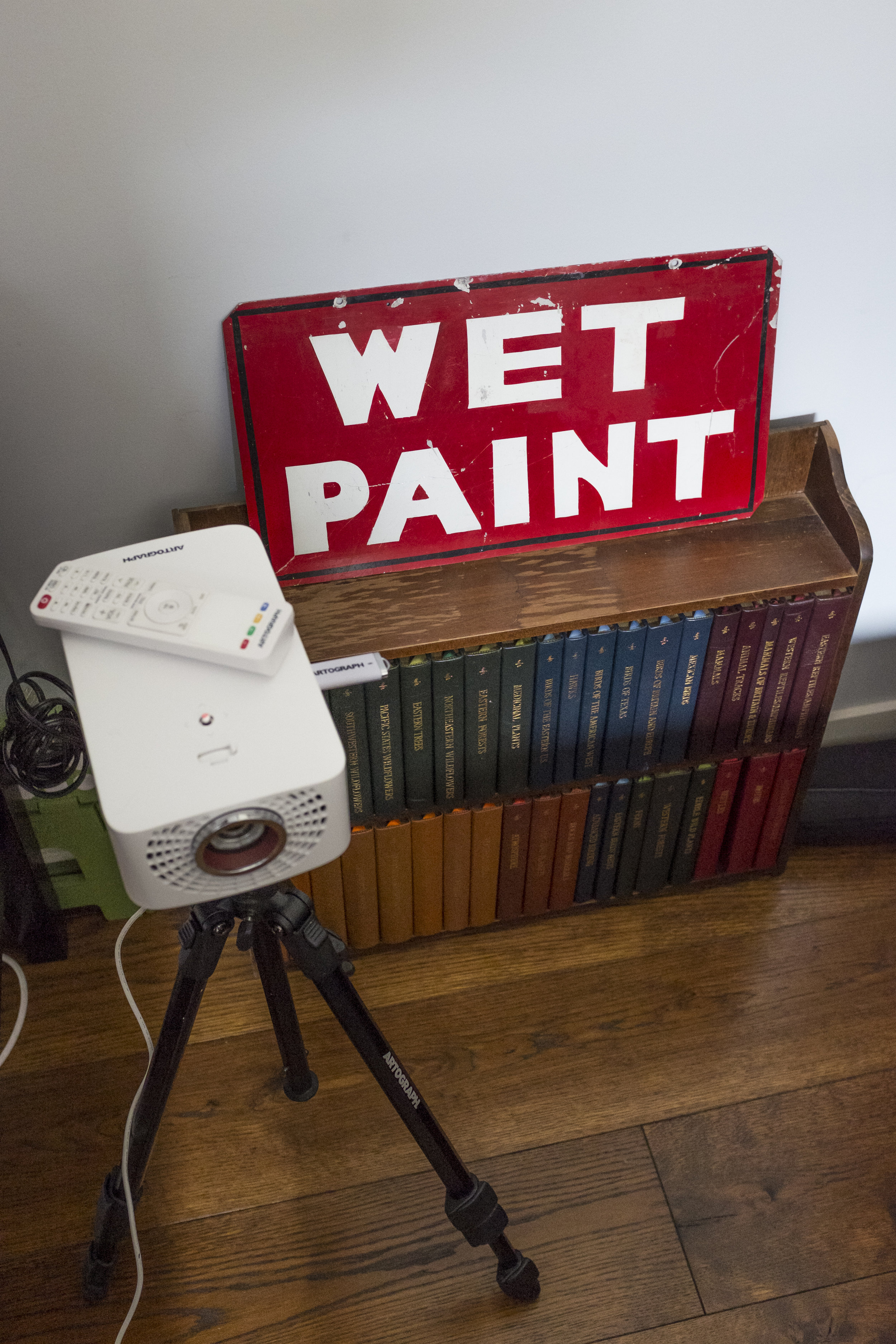
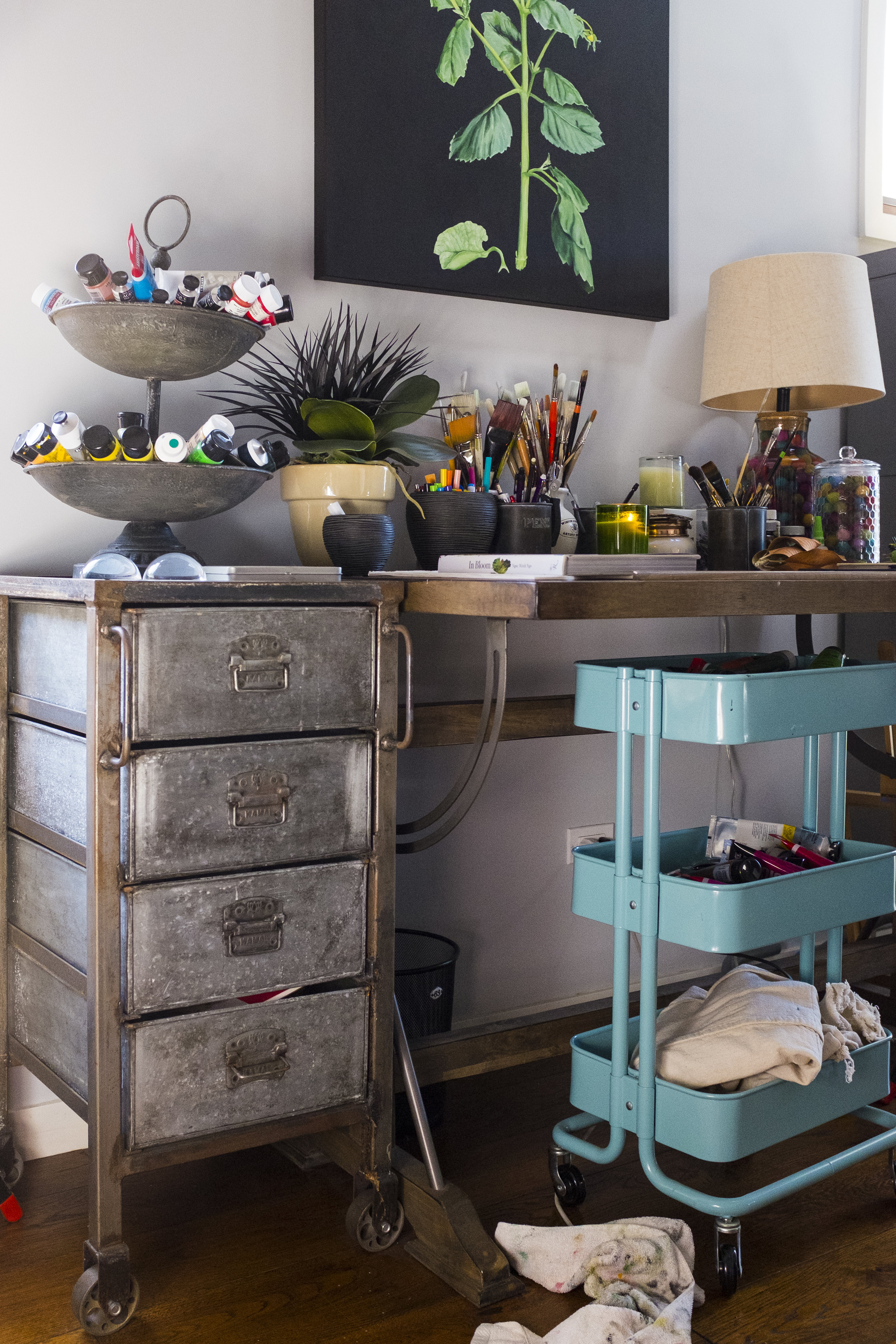


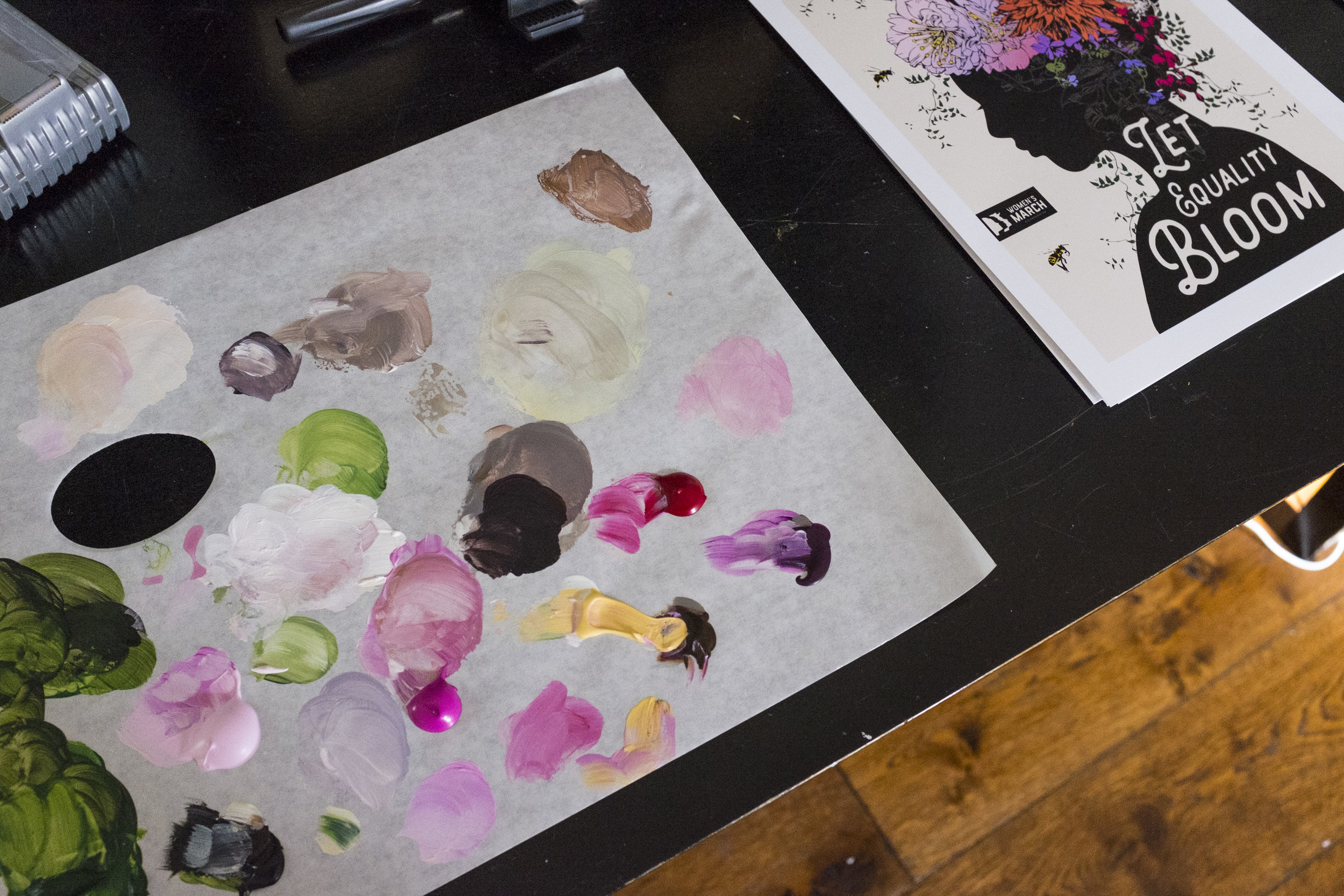

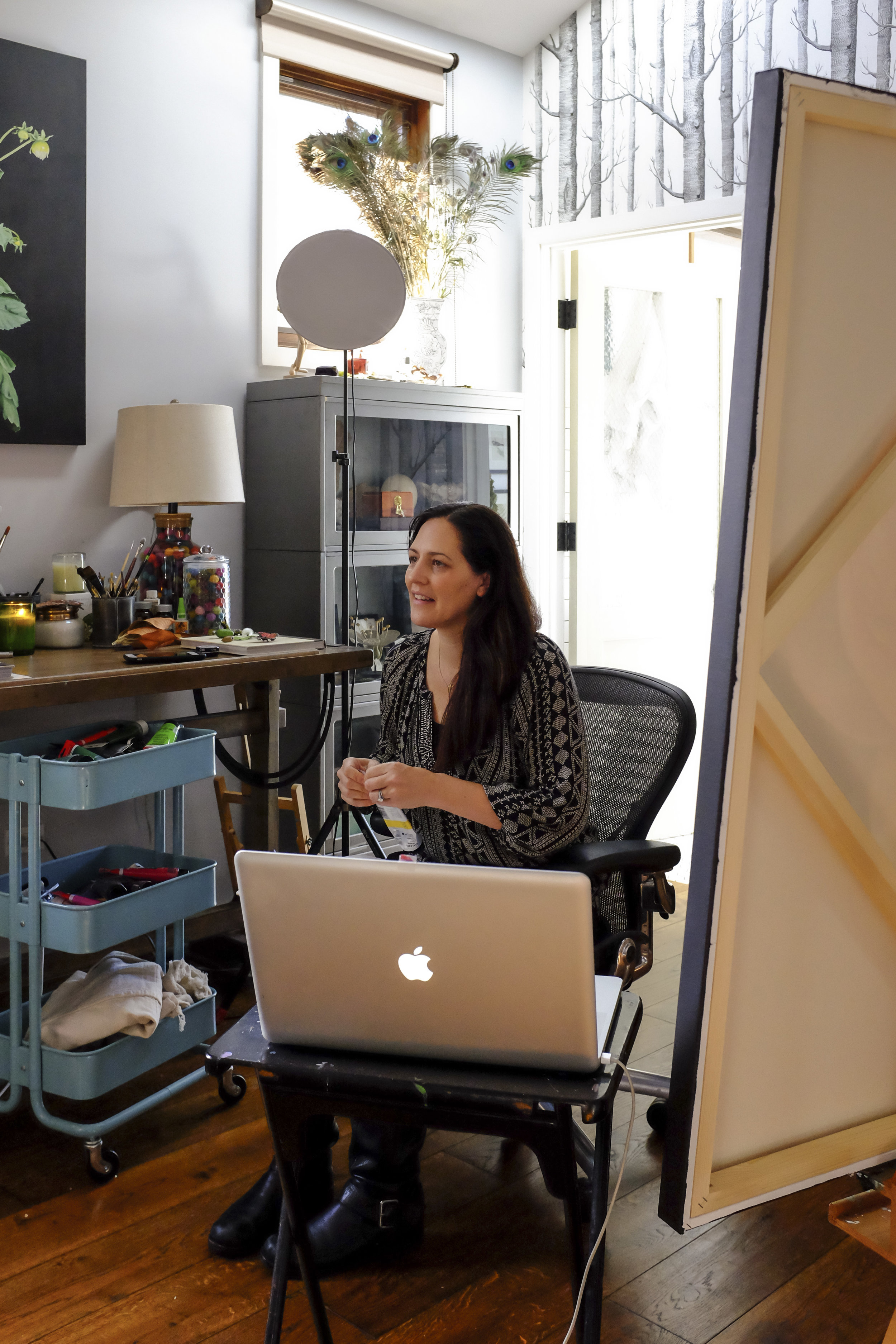
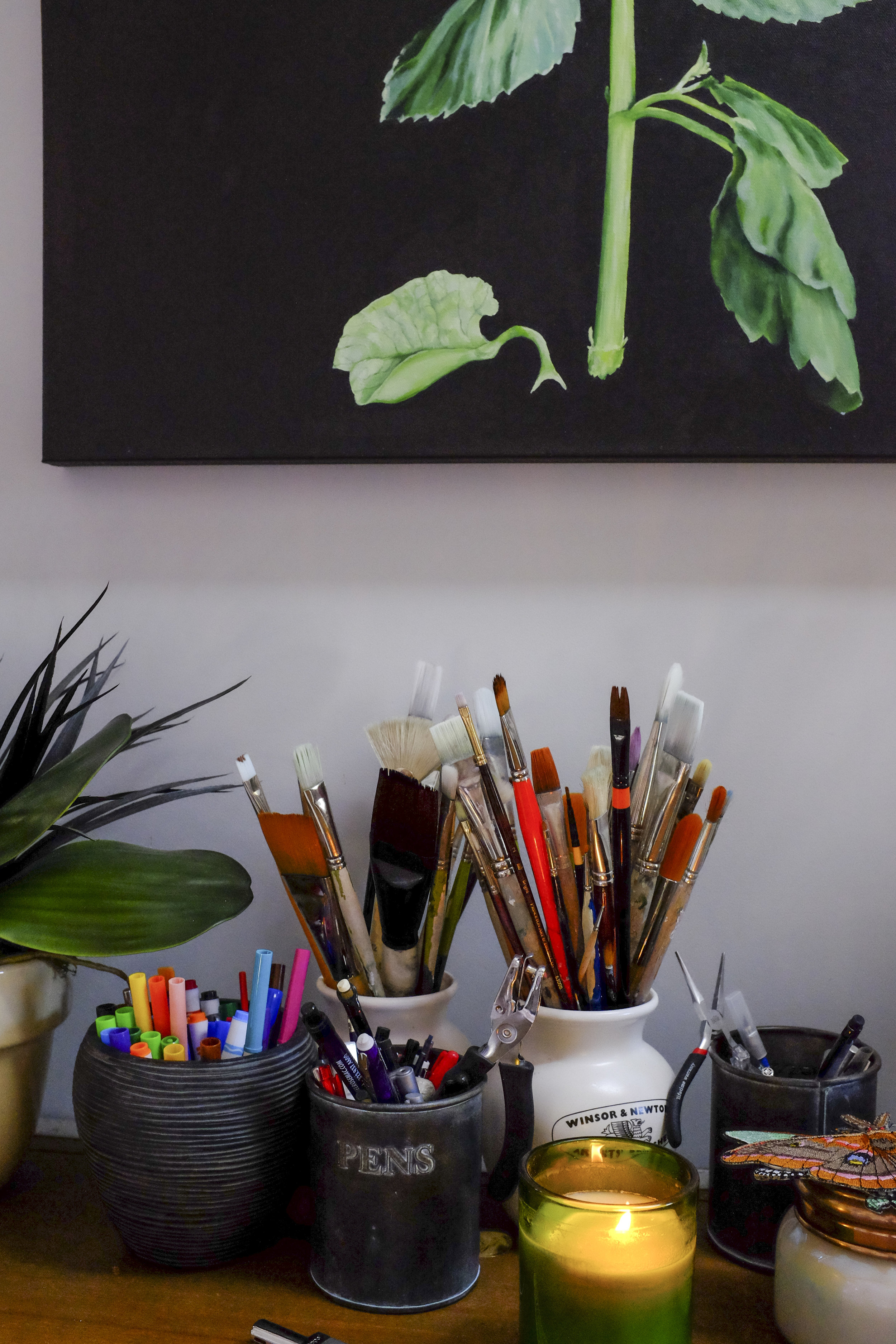
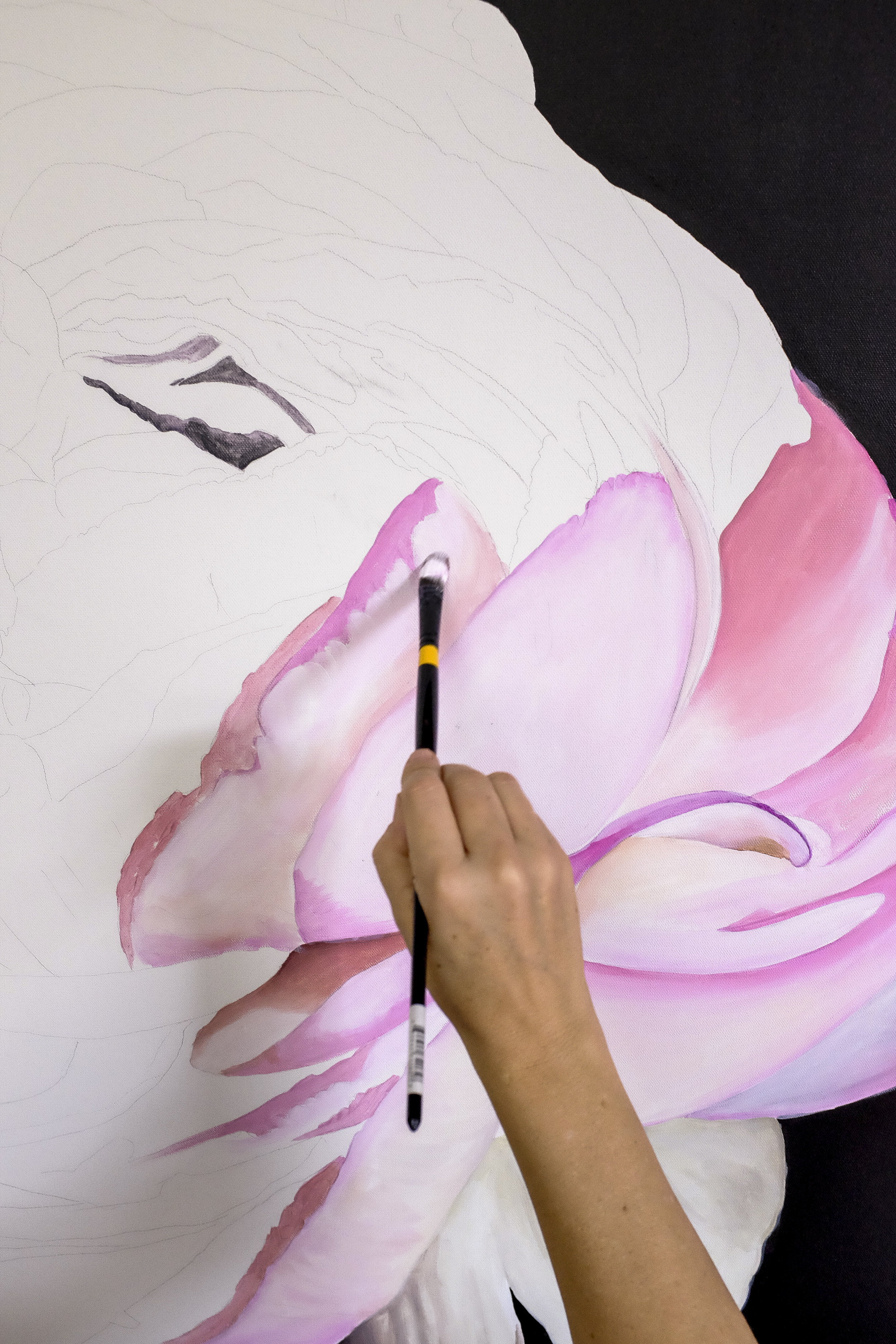
Brooke Fischer
Who are you?
I’m Brooke Fischer. I’m a painter, a graphic designer, a nature lover, a cryer. Tears up. I’m very emotional and passionate about what I do. I watched Obama give his farewell address last night and I’m just feeling the sting of the world right now. I think this year is going to be a lot of political stuff for me - climate change in particular is a huge passion. I just feel like the world is so fragile, and now it’s in the hands of a madman. I’ve felt very deeply affected by that and I think that my future is going to be having a voice. Mostly I think it’s out of pure frustration. I think that as things progress there’s going to be a big fight and I just feel very sad that the last years of peace and quiet are gone. So that’s kind of my emotional state today. It’s just that there’s so much beauty in the world and I want to preserve it and protect it.
Do you have a preferred medium?
I am by trade both a graphic designer and a painter, but luckily these days mostly the latter. I was totally discouraged from being an artist; my parents didn’t want me to become a painter. They pushed me towards graphic design so that I would have a career - it’s a way you can make money and still do art. But I really have a love/hate thing with graphic design because you have to bend to your client’s desires. In most cases I have found that doing so can change the finished piece into something you did not originally intend, therefore taking the “artistic expression” out of it - at least for me. I have always wrestled with that, but don’t get me wrong, I love graphic design. I love playing with text and images. I just prefer the creative freedom that I have with painting.
More specifically in terms of painting, I work mostly with acrylics. I love the color and the richness of oils, but I didn’t want to deal with chemicals and thinners so I picked up acrylics instead. Now there’s a water-based oil and I do use that sometimes on smaller canvases - it’s kind of a happy medium. The colors have more of the rich tones of regular oil and also half the dry time. With acrylic, on the other hand, you have to work really fast. Now that I have been using acrylic for so many years I find other mediums like watercolor challenging. You have so much more control with acrylic and you have to let go of control with watercolor. It probably says a lot about my personality.
What are the subjects of your paintings?
Content in painting is all about nature for me. My philosophy or my concept is that I always have a single flower or a single image and that’s because I just see so much beauty in singularity. I just want you to look at that one thing. That’s always been the deepest meaning behind what I do. My whole objective with my art is to share the moment when a given flower was at it’s most beautiful state - to celebrate this by freezing it in time. Also, you can never really duplicate nature. You only have your own expression of it. So it’s sort of putting my own stamp on that image.
Are your subjects reflections of specific geographic locations?
I think in the future they will be. Climate change is an issue that I am very passionate about and with the Trump administration wanting to pull out of the Paris Agreement, tear down the EPA and drill baby drill, the environmental issues are going to be where I want to use my voice as an artist and a citizen.
I have been talking to my husband, who is a musician and composer, about collaborating on a project where we use music with my paintings. I think I will use it as a voice for climate change. That brings in the geographic locations because it will be about a specific area that will be effected, or a plant, animal or landscape that will be destroyed or extinct because of climate change. We’ll see how that plays out.
I think that using the arts right now is going to be such a healing tool for everybody. We’re really going to see a lot of great art come from this horrible tragedy. That is like the one good thing about Trump that I can say - he’s going to inspire the arts.
What drew you to paint?
I love painting. I love the challenge of trying to paint an image in the exact likeness of a photograph. I have always loved still life paintings of old masters. My favorite painting is a Jan Van Eyck painting called Giovanni Arnolfini and His Bride, which hangs in the National Gallery in London. I got to see it in person a few years ago. I didn’t know it was there and I happened upon it by chance. I had only ever seen it in books. In seeing the real thing I was totally overcome with tears. I was kind of surprised that it had affected me this way. The thing that I love about this painting is all of the wonderful details and the convex mirror where everything is painted again in reverse. It has always blown my mind and it was painted in 1434. I think being so inspired by paintings like this one fueled my desire to paint. I just wanted to try it for myself, and see if I could paint like that. I’m still trying.
Describe your studio.
It is a place to escape. I have to surround myself with things that inspire me. I have little collections of things that I’ve gathered, some of which have more meaning to me than other more precious objects in the house. Collecting definitely plays a huge roll in my work, because my work is about focusing on a singular object of nature. The collecting is my subject and my inspiration. I have always loved a good cabinet of curiosities. So in my studio I have collections of things like butterflies, insects and objects I pick up on the beach.
Some of these things are my most precious treasures. I have small photos of Andy Warhol and Georgia O’Keeffe. I like to think that they are encouraging me. The Andy Warhol pictures are kind of a funny story, actually. They were dropped by a man in a cafe in Denver, Colorado. My friend tried to chase him out of the cafe to give them back, but was too late, he had already gone. When my friend looked down he had these photos of Andy Warhol in his hand. Knowing I was a big Andy Warhol fan he gave them to me. Turns out the man who dropped them was Mark Sink - he was part of Andy Warhol’s factory scene.
Beyond that, the wall paper makes me feel as if I am in a happy forest, surrounded by nature. I feel like being amongst the trees builds a fantasy place in which to paint, which is fun.
Under what conditions do you work best?
Deadlines! At least they insure getting the work done. I tend to take my sweet time otherwise. I think a resolution for 2017 should be to give myself more deadlines. But I wrestle with that too because I don’t want to compromise the quality of the work either. The truth is that a painting is never really finished. I always walk away thinking I could have done more. A lot of times the thing that makes a painting complete is just being ready to move onto another subject.
Do you have any rituals surrounding your practice?
Taking a deep breath, lighting a candle, putting on music and getting to work. Also, music is a huge part of it. I listen to a lot of sixties and seventies classic rock, eighties and nineties alternative music. Also a lot of French music like Edith Piaf and big band music - I love the Ink Spots. Radiohead is great to paint to. I just pick a station on Pandora or make my own playlists.
Describe your process.
I usually paint from my own photographs. I have a photography stage and all photos are taken with my iPhone. There’s photo selection and editing in Photoshop, then putting the final image on a thumb drive to plug into my digital projector. From there I trace the outline of the image, translating just enough information to get the general map of the image so that I can call out the highlights and shadows. Then I start painting. A painting can take me anywhere from a few days to a few weeks when working consistently. I used to feel guilty about using a projector, but I’ve come to embrace it as a tool in part by watching the documentary Tim’s Vermeer - I realized that artists have been using camera obscura projectors for centuries. Also, the projector allows me to get straight to the part I like - the painting. I could draw it out by hand but it would always be a little off and it would take me more time to get to the painting.
What roles do scale and framing play in your work?
Scale is an interesting question. I had my first show at a store called Henry Road with small scale paintings of insects and birds nests with eggs. I initially loved the idea of doing smaller pieces because they could be priced more affordably and they were a good way to get my art out into the world. But then I quickly realized it was just as much work to do a small scale painting as it was to do a large one, so I went the other way. Now most of my pieces are twenty-four to sixty inch squares. I work a lot in square formats.
My husband Chad makes all of my frames. They are a beautiful compliment to the work.
Does your work engage with the technical aspects of painting as a medium?
Since I’m self taught I don’t even know about technicalities. I don’t feel very technical. It’s been all about instinct and feel: the feel of the brush, the way the canvas grabs the paint, how much water to thin with, how many layers to build, how to mix color. That is as technical as it gets for me. For some reason this makes me think of a Michelangelo quote. At age eighty-seven he said, “I’m still learning.” That always stuck with me because we never stop growing, we never stop learning and even at the pinnacle of our lives there is more to know.
In what ways to commissions and commodification play a role in your work?
Commissions are huge. A lot of my work has been commission based. One thing that I really like about a commission is that you have a very specific person in mind when you are working on that painting; you’re thinking about them from time to time as you work. I think that those thoughts gets into the work itself, making it very personal. I believe that memory locks itself into painting. I can be working on a piece and have a very specific thought or dialog in my head. When I come back, sometimes weeks later, and I’m painting over that exact spot where I had this thought or inner dialog, I can have total recall of what I was thinking the last time my brush passed over that location. I find that totally fascinating. I’m always pleasantly pleased when this happens, even if it was an unpleasant thought. How is it possible that our memory can be locked into that part of the canvas? It’s such a cool thing to experience as an artist.
Does social media play a role in your process?
Definitely, especially Instagram. Instagram is the best social media outlet for an artist. I have become a little obsessed in fact. I follow a lot of artists, inspiring people and friends, and it has been a great way to connect to an artistic community. It allows you direct access to people in a way that no other social media outlet does. I have been able to talk directly to other artists I have admired for a long time - it’s great. I don’t use Facebook, partially because it’s too political but also for other reasons too long to get into. I think all artists should be on Instagram.
How have you learned what you know? Did you have any teachers or mentors who helped shape you as an artist?
I was discouraged by an art teacher at a young age so I didn’t think I was good. It wasn’t until high school that I received the validation that I needed, when I was accepted into a higher level art course. I started painting from that point on. Ultimately, I am totally self taught as a painter. I have just honed my skills through trial and error over the years.
Don’t listen to bad teachers and don’t let people discourage you from your passions. Those are hard lessons at a young age. Then there’s the other side of this is the question - did having the discouraging teacher actually make me work harder? Maybe sometimes we need something or someone to discourage us so that we have something to prove. I think some of the best artists had something to prove to someone who discouraged their art.
In what ways has your practice evolved over time?
With every painting I see an evolution. I would like to be more prolific. Then I will just get better.
What is the most challenging part of your process? Where do you find the most ease?
Image selection for me is most challenging. Once the image is selected I can take off. I love the details - I am happiest in the late stages of a painting when I can add on the highlight that makes it look more real. I am always pushing myself in every work to be as photo realistic as possible. It is with this goal in mind that I push back and forth. I want it to look real, but I also want it to look like a painting.
What has painting taught you?
Respect for and appreciation of the natural world.
How has your practice shaped your hands?
They’ve aged! I am grateful for my hands, they allow me to create. I would love to do more physical work with my hands and do some sculpture or pottery. I don’t look forward to the day my hands will challenge me.
Brooke Fischer in Santa Monica, California on January 12, 2017. Photographs by Julia Girardoni.
